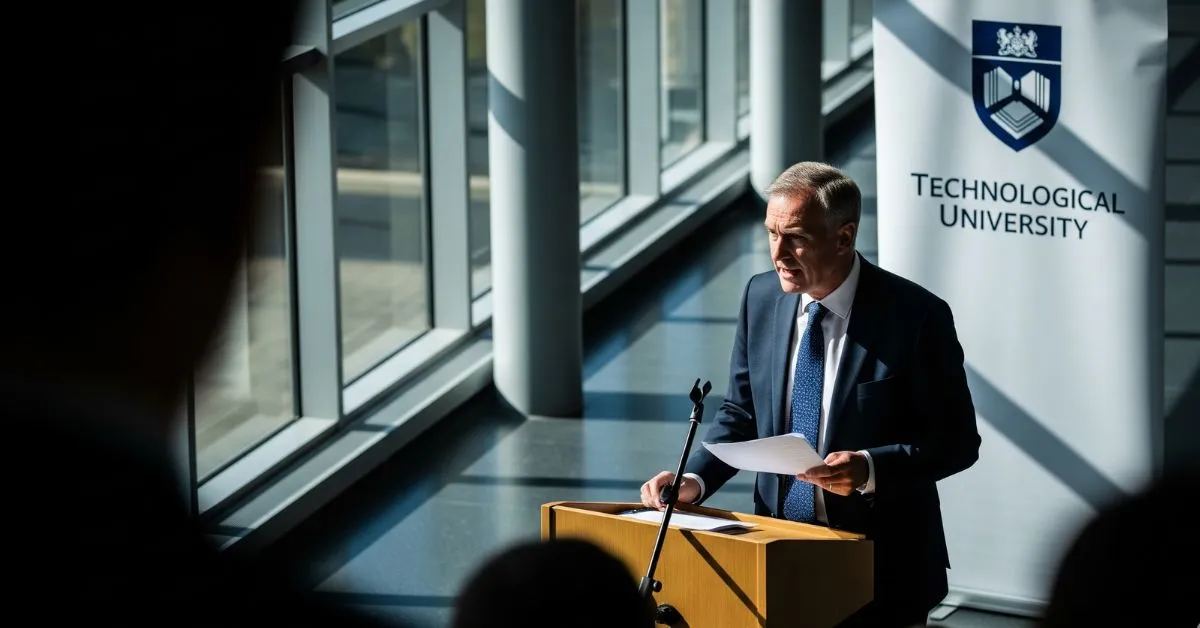In the world of higher education, smooth administration is crucial to the growth and success of any institution. Unfortunately, when administrative conflicts arise, they can significantly hinder the progress of both faculty and students. Recently, a prominent technological university has found itself in such a predicament. The Vice-Chancellor (V-C) of this university has approached the High Court (HC) seeking intervention to resolve an ongoing administrative stalemate that has brought day-to-day operations to a near halt.
The Background: What Led to the Stalemate?
This university, known for its cutting-edge research and technical education, has been facing internal administrative disputes for several months. The issues reportedly began over differences between the university’s governing bodies and certain administrative officials regarding policy decisions and governance protocols.
While disagreements are not uncommon in large organizations, the inability to find common ground has escalated tensions to an unprecedented level. Meetings meant to address these concerns have repeatedly ended without consensus, and as a result, essential administrative processes like staff appointments, student admissions, and examination schedules have been disrupted.
The V-C, in his capacity as the chief executive officer of the university, has repeatedly attempted to mediate and bring all parties together for a constructive dialogue. Despite these efforts, the impasse has persisted, leading to delays in academic calendars and growing dissatisfaction among students and faculty alike.
Why Does This Matter?
Universities are not just places for education; they are ecosystems that nurture innovation, research, and development. When administrative bottlenecks arise, the ripple effects can be far-reaching:
- Academic Disruptions: Delays in the examination process, admission formalities, and result announcements can affect students’ academic progress and career timelines.
- Faculty Morale: Faculty members working under stressful conditions and uncertainty may feel demotivated, which could impact teaching quality.
- Institutional Reputation: Prolonged conflicts can damage the university’s standing among peer institutions and potential students.
- Research Setbacks: Ongoing research projects often rely on timely administrative approvals and funding releases, which get stalled during such stalemates.
Given these consequences, the university’s leadership sees an urgent need to find a resolution.
The V-C’s Move to Seek Judicial Intervention
Recognizing the severity of the deadlock and the absence of a workable solution through internal mechanisms, the Vice-Chancellor has filed a petition in the High Court. The petition requests the court’s directive to facilitate resolution and guide the parties involved towards amicable settlement.
This move reflects the V-C’s acknowledgment that the conflict has gone beyond administrative capabilities and requires judicial oversight to break the impasse. Courts generally try to avoid interfering in the day-to-day management of academic institutions but can intervene when governance issues affect public interest or the institution’s functioning.
What Could a High Court Directive Entail?
If the court agrees to intervene, it could take various approaches:
- Mediation: The court might appoint a neutral mediator or a committee to review the issues and propose a resolution.
- Interim Orders: To ensure the university’s functioning is not affected, the court may pass temporary orders allowing specific administrative actions to proceed.
- Guidelines for Governance: The court might lay down clear directions regarding decision-making authority, dispute resolution mechanisms, or structural reforms.
- Final Judgement: If the case involves legal violations or constitutional issues within the university’s framework, the court could deliver a binding judgement.
Regardless of the outcome, the court’s involvement is expected to bring clarity and a path forward for the university administration.
What Stakeholders Are Saying
The administrative stalemate has attracted attention from various stakeholders — students, faculty, alumni, and policymakers.
- Students express frustration over delays affecting their academic calendar. Many feel their education and career prospects are being jeopardized due to factors beyond their control.
- Faculty Members highlight the difficulties they face in fulfilling their teaching and research responsibilities amid uncertainty. Some have urged for urgent resolution to restore normalcy.
- Alumni and Industry Partners worry about the university’s ability to maintain its standards and collaborations during this turbulent phase.
- Education Experts stress the importance of transparent governance structures in universities and advocate for proactive conflict resolution mechanisms.
Lessons from Similar Situations
Administrative conflicts are not new to educational institutions. Several universities across the country and globe have faced similar challenges. The key takeaway from these experiences is that early intervention and transparent communication can prevent issues from escalating into crises.
Often, independent committees with representatives from all concerned parties help mediate differences before they become irreparable. Universities that embrace participative governance models, where faculty, administration, and students have a say in decision-making, tend to experience fewer stalemates.
Moving Forward: What Can Be Done?
While the High Court’s directive is awaited, the university’s leadership and stakeholders can consider several proactive steps:
- Open Dialogue: Regular and honest communication among administration, faculty, and students is essential.
- Third-Party Mediation: Involving an impartial mediator early in the dispute can facilitate trust and compromise.
- Review Governance Policies: Assessing and updating the university’s governance frameworks to clarify roles and responsibilities.
- Strengthen Internal Mechanisms: Establishing grievance redressal committees and conflict resolution protocols to handle disputes efficiently.
- Focus on Core Mission: Reminding all parties of the university’s purpose – education and research – can help align priorities.
Conclusion
The administrative stalemate at this technological university highlights the delicate balance required in managing academic institutions. While governance conflicts are inevitable, how they are resolved determines the institution’s future trajectory.
The Vice-Chancellor’s decision to seek the High Court’s guidance signals a commitment to overcoming challenges and restoring the university’s functioning. It also underscores the importance of the judiciary in safeguarding the interests of educational institutions when internal mechanisms falter.
As this case unfolds, all eyes will be on the outcome and the lessons it offers for higher education governance. For students, faculty, and staff, the hope is that normalcy returns soon, allowing the university to focus once again on its core mission of imparting quality technical education and fostering innovation.
